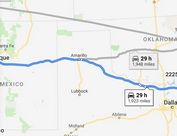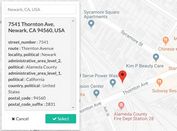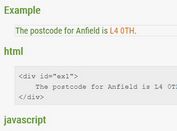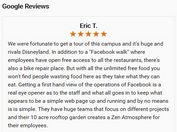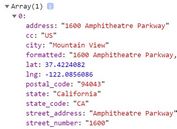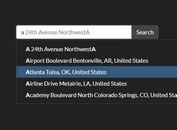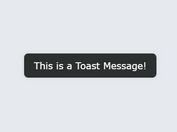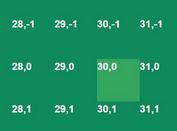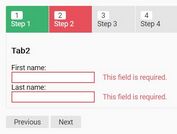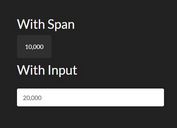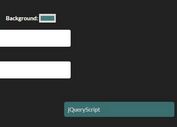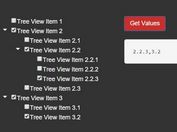Add/Pick/Search Places On Google Maps - mapsed.js
| File Size: | 720 KB |
|---|---|
| Views Total: | 4288 |
| Last Update: | |
| Publish Date: | |
| Official Website: | Go to website |
| License: | MIT |
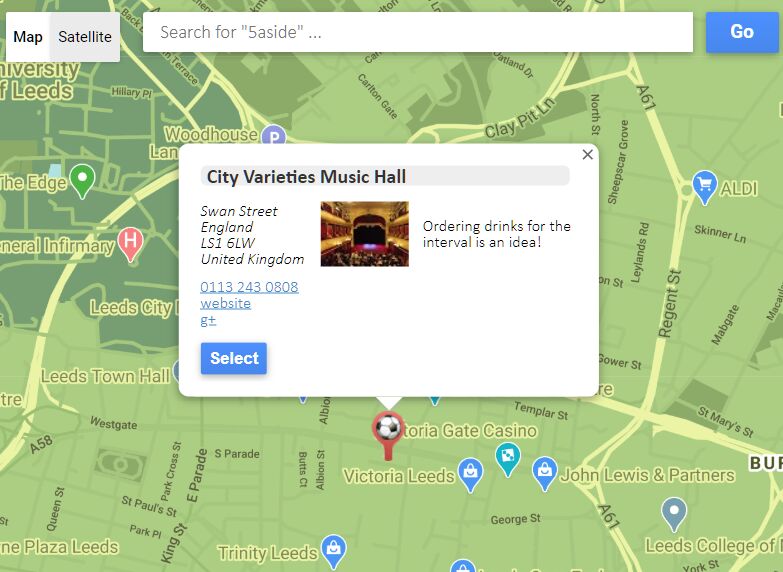
mapsed.js is a jQuery plugin for Google Maps that allows the user to select, search places and add/remove custom places on a Google Map. Requires Google Maps Places API.
More Features:
- Shows place info once the map has finished loading.
- Allows the user to edit the content of selected places.
- Displays the details of a place.
- Centers the map based on your GEO.
- Supports custom themes.
- Custom marker images.
- Help window showing additional instructions to the user.
- Callback functions.
How to use it:
1. Load the necessary jQuery library and Google Maps Places API in the document. Don't forget to replace the API key with your owns.
<script src="https://maps.googleapis.com/maps/api/js?libraries=places&key=API KEY"></script> <script src="/path/to/cdn/jquery.min.js"></script>
2. Download and load the mapsed.js plugin after jQuery.
<script src="mapsed.js"></script>
3. Create an element that serves as the container for the Google map.
<div id="myMap"></div>
4. Initialize the Google map and add a custom place to the map.
$("#myMap").mapsed({
showOnLoad: [
// City Varieties
{
// flag that this place should have the tooltip shown when the map is first loaded
autoShow: true,
// flags the user can edit this place
canEdit: false,
lat: 53.798823,
lng:-1.5426760000000286,
place_id: "ChIJQd3IwBtceUgRha6laiANoro"
},
// Random made up CUSTOM place
{
// flag that this place should have the tooltip shown when the map is first loaded
autoShow: true,
lat: 53.79,
lng:-1.5426760000000286,
name: "Somewhere",
street: "Over the rainbow, Up high way",
userData: 99
}
]
});
5. Create a Place Picker that allows you to get the place info using the onSelect callback.
$("#myMap").mapsed({
// allow user to select somewhere
onSelect: function(m, details) {
var msg =
"Name: " + details.name +
"<br/>Address: " +
details.street + ", " +
details.town + ", " +
details.area + ", " +
details.postCode +
"<br/>website: " + details.website +
"<br/>g+: " + details.url +
"<br/>Tel: " + details.telNo
;
if (details.place_id) {
msg += "<br/>Place_id: " + details.place_id
}
m.showMsg("Place selected!", msg);
// indicate tip should be closed
return true;
},
showOnLoad:
// City Varieties
{
// flag that this place should have the tooltip shown when the map is first loaded
autoShow: true,
lat: 53.798823,
lng:-1.5426760000000286,
place_id: "ChIJQd3IwBtceUgRha6laiANoro"
}
});
6. This example shows how to add a custom place on the Google map.
$("#myMap").mapsed({
// Adds the "+" button to the control bar at the top right of the map
allowAdd: true,
// Enables edit of custom places (to your web application, not Google Maps!)
// ... again the presence of the callback enables the functionality
onSave: function(m, newPlace) {
var missing = [];
// detect errors starting at bottom
// ... we only have space for one error at a time, so this way we'll report
// ... from the top down
if (newPlace.postCode === "") missing.push("postcode");
if (newPlace.street === "") missing.push("street");
if (newPlace.name === "") missing.push("name");
// anything missing?
if (missing.length > 0) {
// return the error message so the callback doesn't progress
return "Required: " + missing.join();
}
if (newPlace) {
if (newPlace.markerType == "new") {
// simulate a primary key being save to a db
newPlace.userData = parseInt(Math.random() * 100000);
}
var title = "";
var msg =
"userData: " + newPlace.userData +
"<br/>name: " + newPlace.name +
"<br/>street: " + newPlace.street + ", " +
newPlace.area + ", " +
newPlace.town + ", " + newPlace.postCode +
"<br/>telNo: " + newPlace.telNo +
"<br/>website: " + newPlace.website +
"<br/>g+: " + newPlace.url
;
if (newPlace.place_id) {
msg += "<br/>Place_id: " + details.place_id
}
if (newPlace.markerType == "new") {
title = "New place added!";
} else {
title = "Place saved!";
}
m.showMsg(title, msg);
}
// indicate form was OK and saved
return "";
}
});
7. The plugin also allows you to delte a custom place from the Google map.
$("#myMap").mapsed({
showOnLoad: [
// City Varieties
{
autoShow: true,
canEdit: true,
lat: 53.798823,
lng:-1.5426760000000286,
name: "CITY Varieties Music Hall",
url: "https://plus.google.com/103655993956272197223/about?hl=en-GB",
website: "http://www.cityvarieties.co.uk/",
telNo: "0845 644 1881",
street: "Swan Street,",
town: "Leeds",
area: "West Yorkshire",
postCode: "LS1 6LW",
userData: 99
}
],
// Allows the user to delete a "custom" place they've previously
// ... added
onDelete: function(m, placeToDelete) {
m.showMsg(
"YOUR DELETE CODE HERE",
"<strong>" + placeToDelete.name + "(" + placeToDelete.userData + ")</strong> has been removed."
);
// here would be code your application to do the actual delete
// return true to confirm it was deleted OK and remove marker from the map
// return false if the delete failed
return true;
},
// Flag that we want the user to confirm the delete before we actually do it
confirmDelete: true
});
8. Allows the user to search a place.
$("#myMap").mapsed({
// Adds a predictive search box
searchOptions: {
enabled: true,
//initSearch: "Football in Leeds",
geoSearch: "Hotels near {POSITION}",
placeholder: "Search ..."
},
// Turn on geo location button
allowGeo: true,
findGeoOnLoad: true,
// allow user to select somewhere
onSelect: function(m, details) {
var msg =
"name: " + details.name +
"<br/>street: " + details.street + ", " +
details.area + ", " +
details.town + ", " + details.postCode +
"<br/>telNo: " + details.telNo +
"<br/>website: " + details.website +
"<br/>g+: " + details.url
;
if (details.place_id) {
msg += "<br/>Place_id: " + details.place_id
}
m.showMsg("You selected ...", msg);
// indicate tip should be closed
return true;
},
// shows additional instructions to the user
getHelpWindow: function(m) {
var html =
"<div class='mapsed-help'>" +
"<h3>Find a venue</h3>" +
"<ol>" +
"<li>Simply use the <strong>search</strong> box to find a venue in your area.</li>" +
"<li>On the pop-up, click <strong>Select</strong> to pick a pitch.</li>" +
"</ol>" +
"<h3>New venues</h3>" +
"<ol>" +
"<li>Your venue isn't displayed? Simply click on the map where your pitch is.</li>" +
"<li>Fill in the details in the dialog.</li>" +
"<li>You can drag the marker around to pinpoint the right location.</li>" +
"<li>Once you're happy, click the <strong>OK</strong> button</li>" +
"</ol>" +
"</div>"
;
return html;
}
})
9. Full plugin options and callback functions.
// Array of places to show on the map initially
// (see accompanying examples for illustration)
showOnLoad: null,
// Specifies the buttons and tooltips added to the map toolbar
ToolbarButtons: {
Go: "Go",
More: "More|There are more results available ...",
AddPlace: "+|Add a place",
CloseMap: "×|Close map",
Geo: "⊗|Centre map based on your location",
Help: "?|Show help"
},
// Species the text of the buttons used the dialog templates
ActionButtons: {
Select: "Select",
Edit: "Edit",
Delete: "Delete",
Save: "Save"
},
// Options for drawing the map. This is the same object
// that is passed to the Google Maps API when creating the map.
// If you need something custom supported by the Google Maps API
// you should be able to add in your own initialisation code
// to this object.
mapOptions: {
// Initial zoom level (initially not set)
// ... be cautious when setting a zoom level _and_ defining custom places as you may set the
// ... level to such a level that your places aren't visible
// ... by default the map will expand to show all custom places, you can change this with the "forceCenter" option
zoom: DEFAULT_ZOOM,
// Default to the best theatre ever :-)
center: DEFAULT_CENTER,
// Type of map to show initially
mapTypeId: google.maps.MapTypeId.ROADMAP
},
// template options
templateOptions: {
custom: {
view: {
header: "<center>custom view header</center>",
footer: "<center>custom view footer</center>",
},
edit: {
header: "<center>custom edit header</center>",
footer: "<center>custom edit footer</center>"
}
}
},
// Flags whether Google Maps should still display other points-of-interest
// By default POI is enabled because the POIs can't be turned off when using custom styled maps
// (well without significant hacks!)
// If you require custom maps, you need "disablePoi" set to false
disablePoi: false,
// Flags that the user can add new places (as well as edit/delete), an "+" icon appears
// at the top right of the map
allowAdd: false,
searchOptions: {
// Flags that the user can search for places themselves
// ... adds a search box to the map
enabled: false,
// Placeholder text for the search box
placeholder: "e.g. Hotels in Leeds",
// Initialises the place search with a given text search
// ... (i.e. once the map has been created, the results for this string are also shown)
initSearch: "Hotels in Leeds",
// Performs a search when geo-location is activated. This can be either
// on load (see "findGeoOnLoad" option) or when the Geo location button is clicked
// {POSITION} is replaced with the detected Geo location position
// "geoSearch" supersedes any "initSearch" specified (if the user enables Geo location for the map)
geoSearch: "5aside football near {POSITION}"
},
// Event when user clicks the "Select" button
// prototype: function(mapsed, details)
onSelect: null,
// Allows new places to be edited
// prototype: function(mapsed, newPlace)
// return a error message string if you're not happy with what's been entered
// return an empty string to confirm it's been saved
onSave: null,
// Allows the user to delete a "custom" map they've previously added
// prototype: function(mapsed, details)
// return true to confirm delete, false abandons the delete
onDelete: null,
// Flags that the user is asked for confirmation if they try and
// delete a place
confirmDelete: false,
// Event fires when user clicks the "X" button (only in full window mode)
// prototype: function(mapsed)
// return true to close the map, false keeps it open
onClose: null,
// Callback for getting the [image] URL to use for a marker
// Parameter "markerType" is passed, indicating the type of marker, this can be
// prototype: function(mapsed, markerType, title)
// Parameters:
// mapsed: Reference to the mapsed plugin
// markerType: The type of marker being added to the map:
// "new" = Marker created using the "+" button to add a new place
// "google" = Marker is being added from a Google Places place
// "custom" = Marker is being added from application database (via "showOnLoad" array)
// title: Title attribute of the marker
// Returns:
// Google Icon object (see https://developers.google.com/maps/documentation/javascript/reference#Icon)
getMarkerImage: null,
// Adds a help button to give further instructions to the end user
// prototype: function()
getHelpWindow: null,
// show the help dialog when the map is loaded
showHelpOnLoad: false,
// Adds a GEO location button onto the map which is used to set the
// centre of the map according to the user's GEO location position
allowGeo: false,
// Flags that mapsed should place the centre of the map where the user's
// GEO location position is.
// Note: This is ignored if "showOnLoad" property is populated as there is
// a risk the places won't be shown on the map
findGeoOnLoad: false,
// When adding custom places, mapsed will expand the map to show all places
// Usually this is what you'd want, but sometimes you may want to focus on a particular area
// "forceCenter" will override the default behaviour and centre where specified in the options
forceCenter: false
Changelog:
v2.1.0 (2024-03-24)
- update
v2.0.0 (2024-03-13)
- allow template customisation hooks
- ability to add markers to the current map boundary
- marker pagination
- bugfixes
v1.2.0 (2024-02-23)
- allow template customisation hooks
- ability to add markers to the current map boundary
- marker pagination
- bugfixes
v1.1.0 (2024-02-20)
- Bugfixes
This awesome jQuery plugin is developed by toepoke. For more Advanced Usages, please check the demo page or visit the official website.
